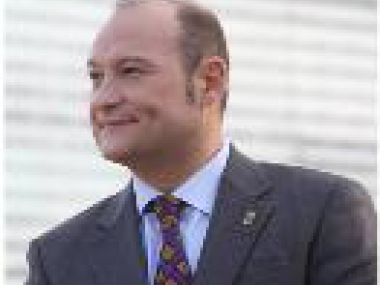USEAct Project – Interview with the the Mayor of Viladecans
Edited on
06 February 2015The themes of protection of empty land and the reuse and re-functionalization of inner urban areas are among key European strategies for the cities’ sustainable development and growth. In this context the USEAct URBACT project aims at exploring the urban development interventions and new or improved settlement opportunities for people and businesses, using existing locations without consumption of further land. In an interview conducted by the USEAct Team, the Mayor of Viladecans, Carles Ruiz Novella, explains his vision of Urban Growth Management and how he supports urban regeneration in his city.

What is the importance and the priority level your city organization ascribes to the development of "Urban Growth Management" and strategies for reduction of soil consumption? What are the expected benefits from your administration?
The city of Viladecans has a significant amount of undeveloped land; part of this territory belongs to the Natura 2000 Network, due to our commitment to sustainability. This commitment is the reason or which we fight to preserve those places that should be excluded from the city growth process. Furthermore, in recent decades the city has prompted an intense process of modernization and transformation making a very accurate "Urban Growth Management" policy indispensable. With all these efforts, we hope to contribute to the definition of a more complex, more sustainable, and ultimately more liveable city for our citizens.
What is the role played by your organization to develop planning tools for "Urban Growth Management" with the aim of less land use and what is, in general, the degree of strategic and operational cooperation with the other authorities (national, regional, local) on the specific "Land use" issue? What are the most positive and the problematic aspects of territorial cooperation?
One of the highlights is the constant concern maintained by the government teams to define the growth of the city in a global and comprehensive sense. Therefore, two strategic plans were approved (1994 and 2005) and a Local Agenda 21 (2000) was established.
Territorial preservation has always been present in our goals as a priority, and this commitment has been growing and defining. Also, during these years there have been an increase number of legal reforms at national and regional level that have facilitated the territory maintenance.
However, cooperation has often been more effective during the elaboration and processing of territorial plans at regional or plurimunicipal levels. The most positive issues have been those projects and plans that had allowed the areas that should be protected for their special values (natural, landscape, agricultural...) to be defined. About the negative balance, we could include as problematic aspects those related to the definition of border areas, about which it is difficult to reach a consensus among the various levels of government, especially when there is a lack of provision of financial resources from the competent authorities or administrations.
What are tools and strategies for "urban growth management" Land Use/Reuse/ Refitting, how they are used to support urban regeneration(s) in your city?
It is not possible to emphasize any particular tool or strategy, the goal consists in seeking the best solution for each neighbourhood or area: in some cases it has been to opt for "refitting", others for "reuse" or even the mixed application of these instruments. Lately, it is being carried out actions that are agreed with residents and their representatives, that are integrated into a mandate commitment called Neighbourhood Contract. This methodology allows us to be more efficient and responsive to citizens’ concerns, improving the management of public and economic resources available, which are currently very limited.
What would be your request to the European Commission for a real support on policies on land use?
Although it should be understood that territorial planning policies and those related to land use are developed in a regional or almost local framework, it would be positive to have European tools to support reuse / refitting / retrofitting interventions. These measures are very necessary for most European urban areas, because urban environments must be adapted to the needs of habitability, sustainability and new technologies.
It is important to think about tools which are applicable in residential neighbourhoods and economic activity sectors, because the whole city must be launched.
What would be your request to your National and Regional authorities for a real support on policies on land use?
Until recently, national urban policies were just devoted to the definition of suitable territory to be urbanized.
This vision has led to a clear tendency to increase urban land, as a result land reservation gained importance. Through new legislation this trend has been corrected but, at the same time, there has been an excess of regulation. It would therefore be desirable to simplify and clarify the applicable sectoral legislation.
The quantity and complexity of regulations could favour the presence of illegal urbanized territories or unlawful activities. Furthermore, we reiterate the need to provide economic policies to preserve the territory. Often protective measures to preserve environment have been provided, but they were not accompanied by a budget for its management and maintenance.
Read more :
- USEAct - URBACT website
 Download USEAct in Spain Newsletter (12.71 MB) - PDF
Download USEAct in Spain Newsletter (12.71 MB) - PDF
Submitted by admin on
